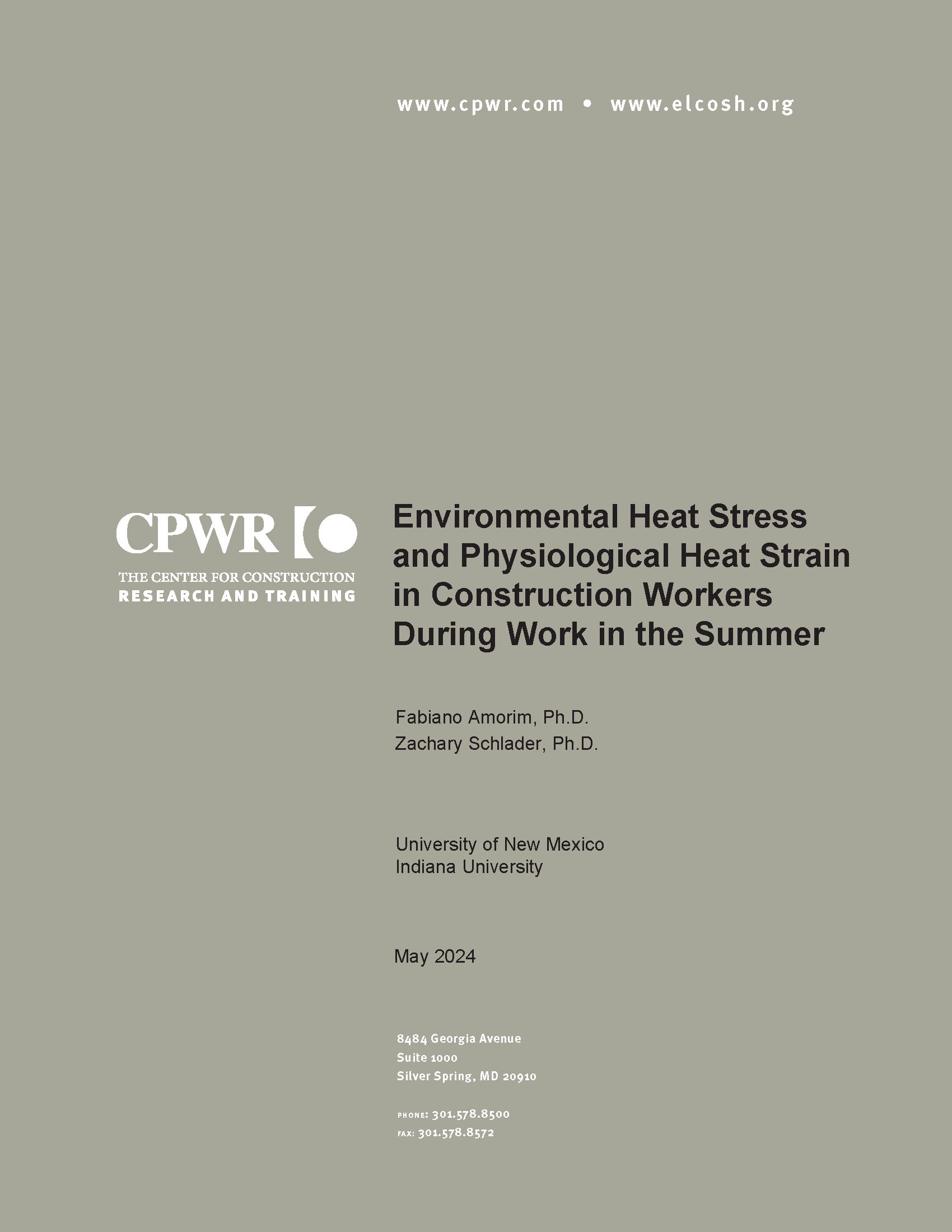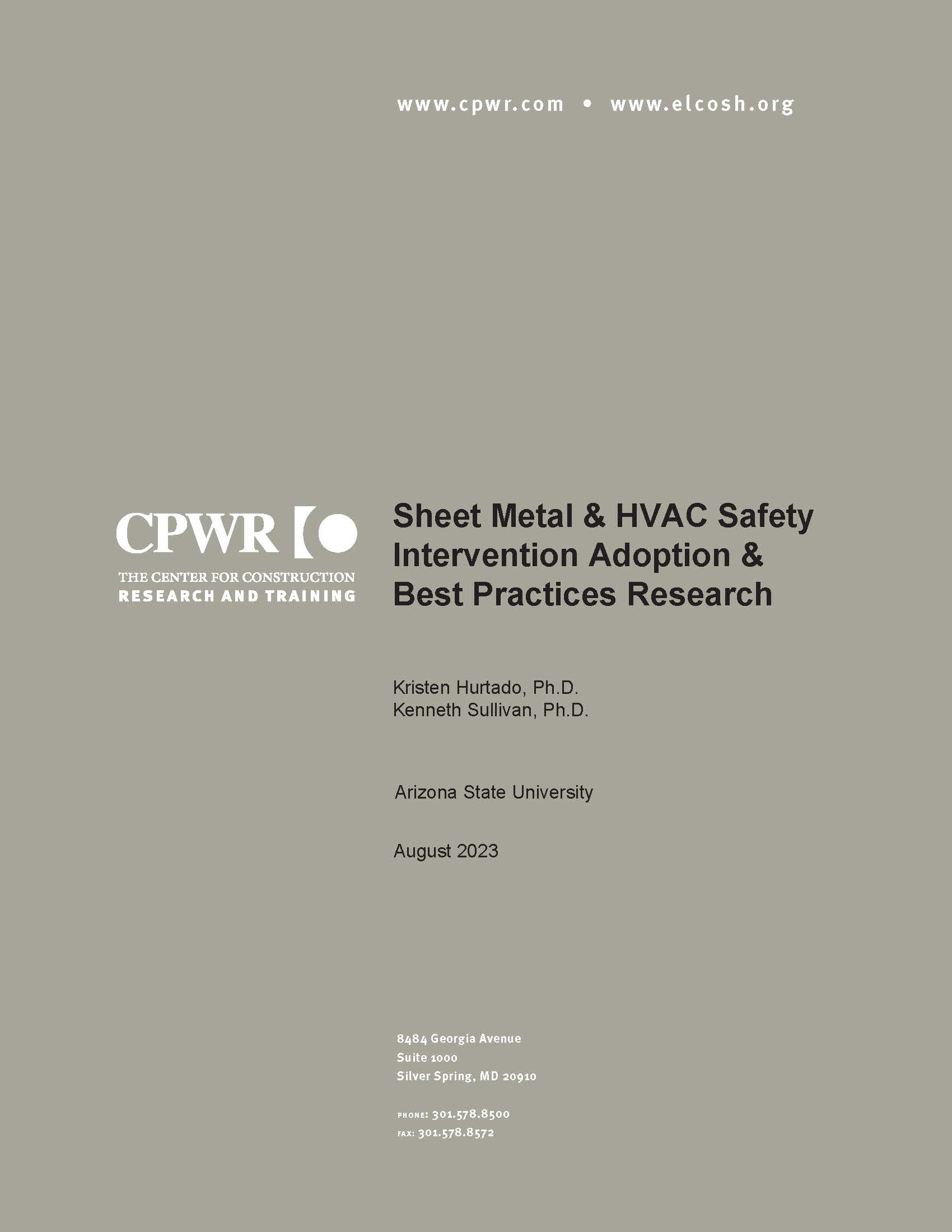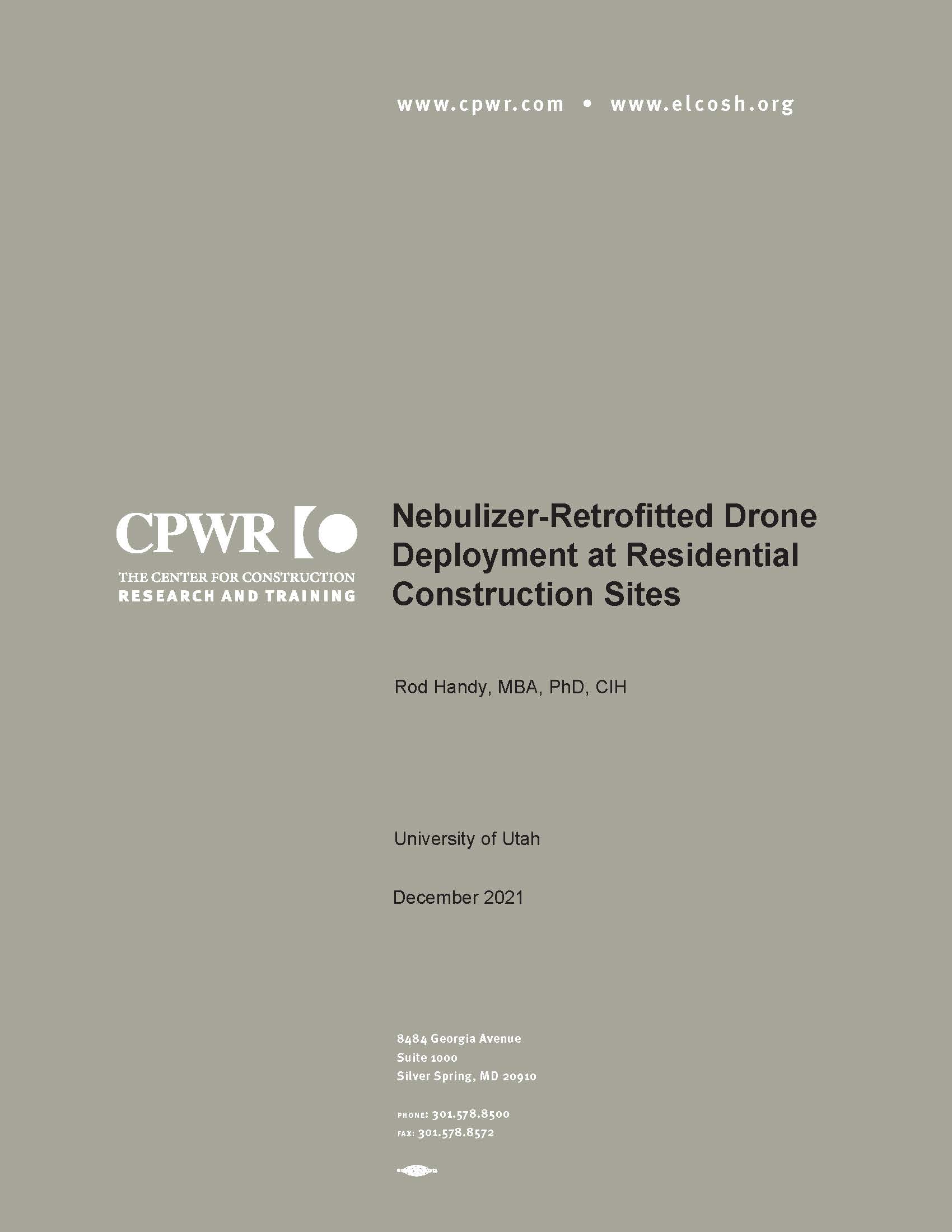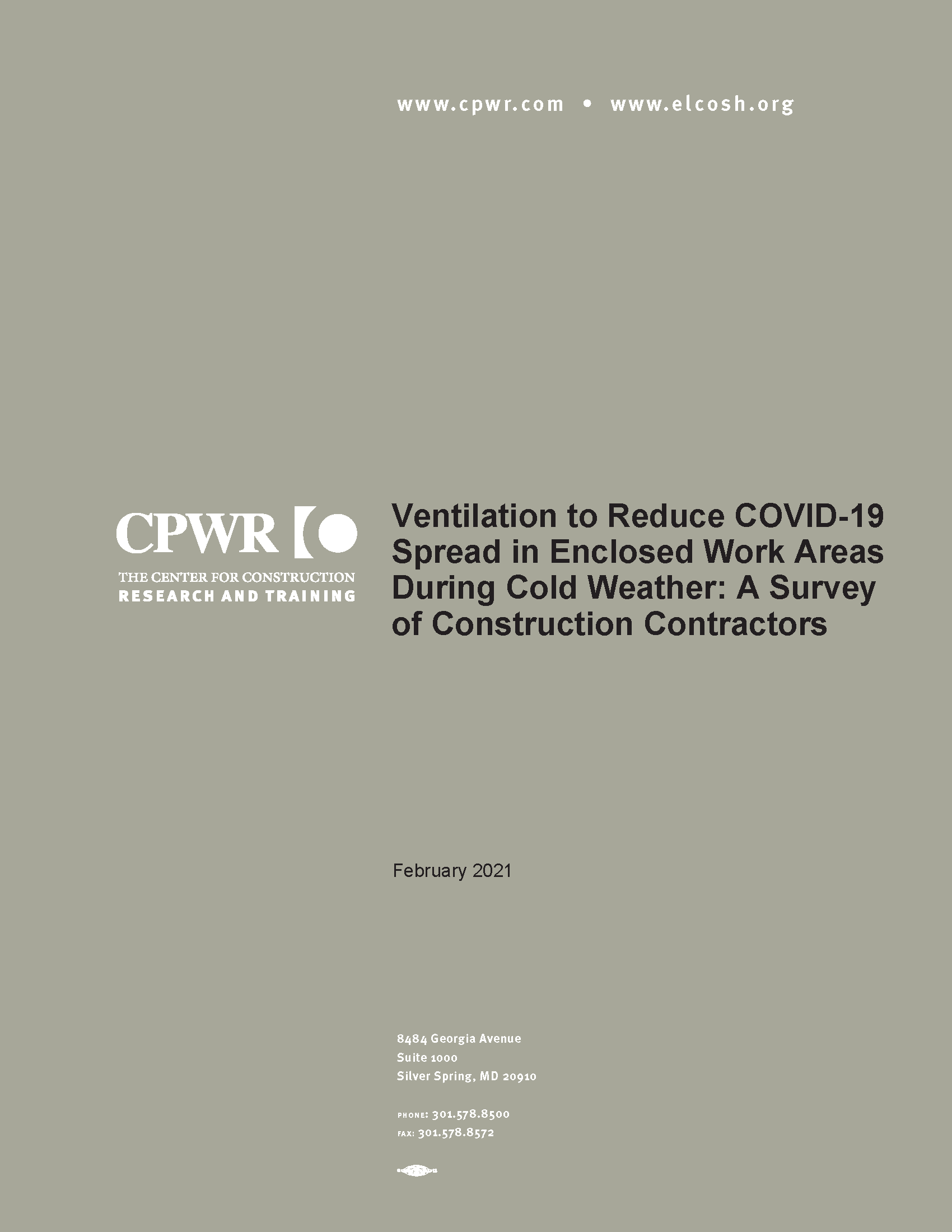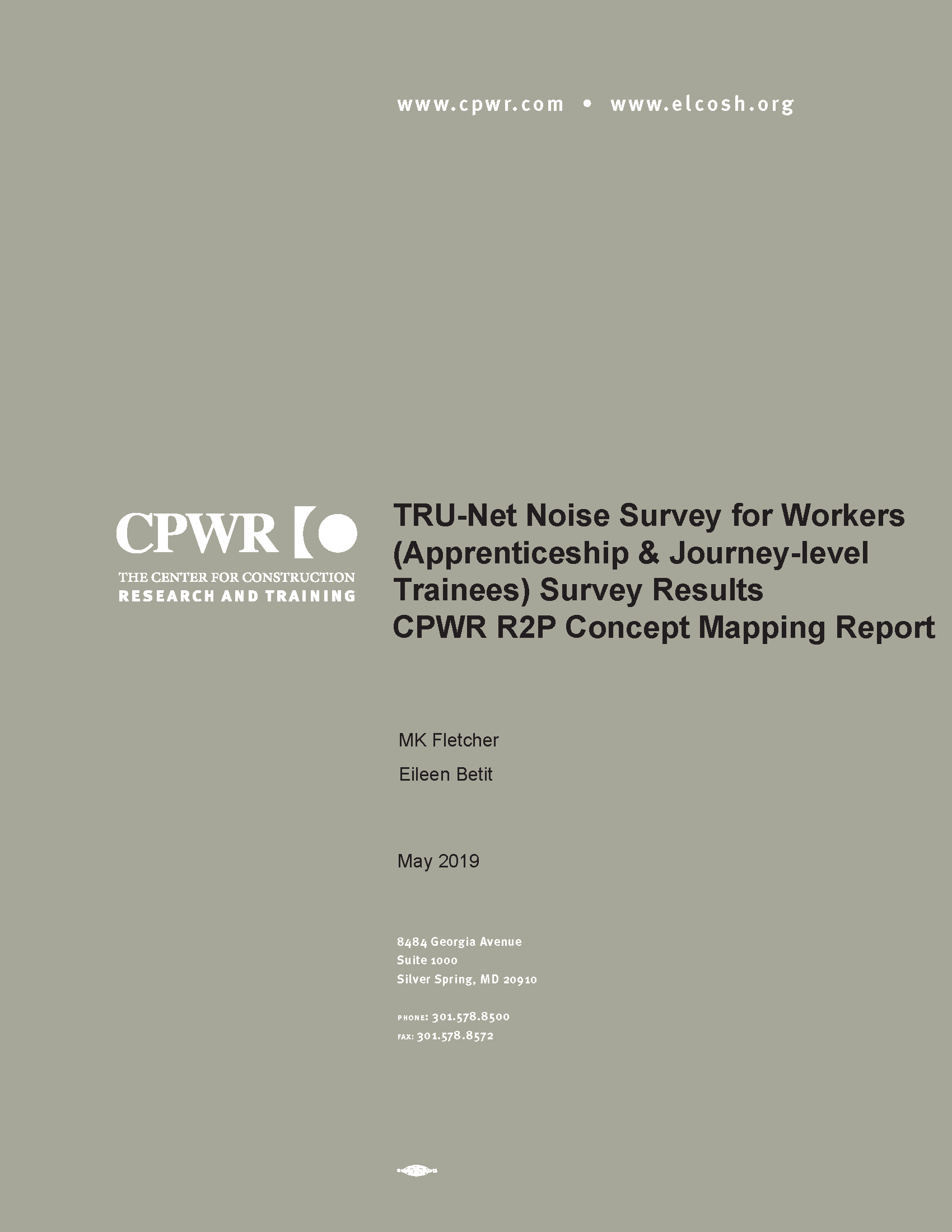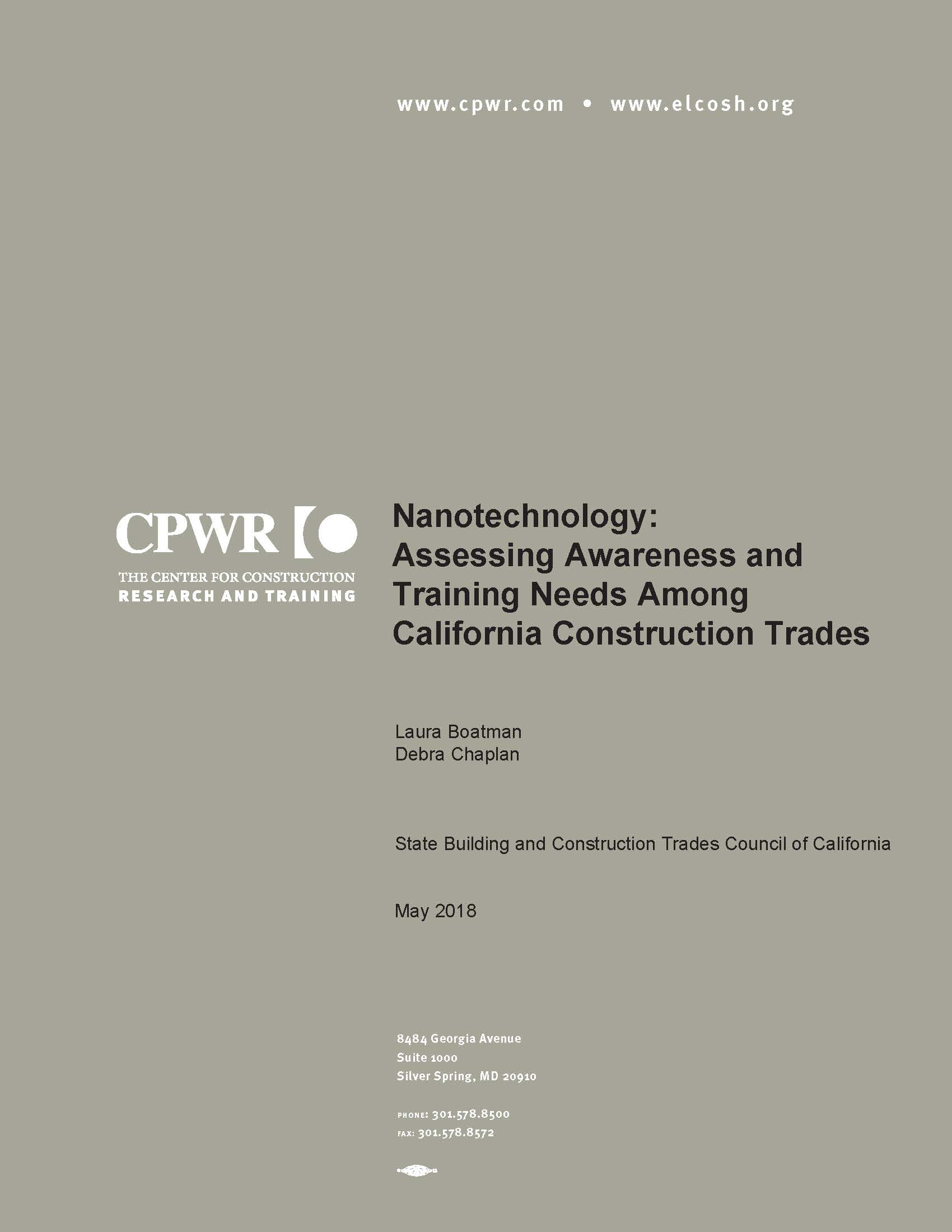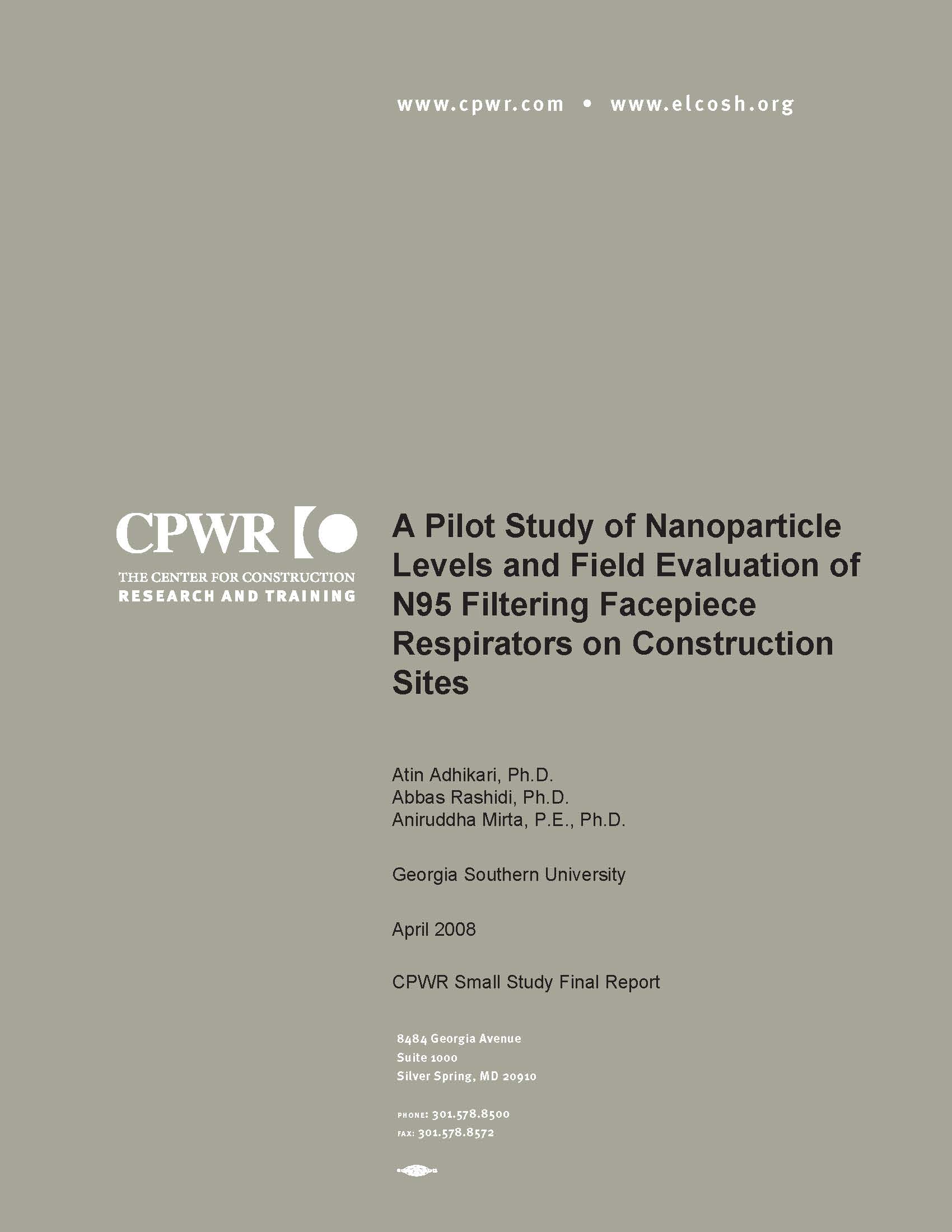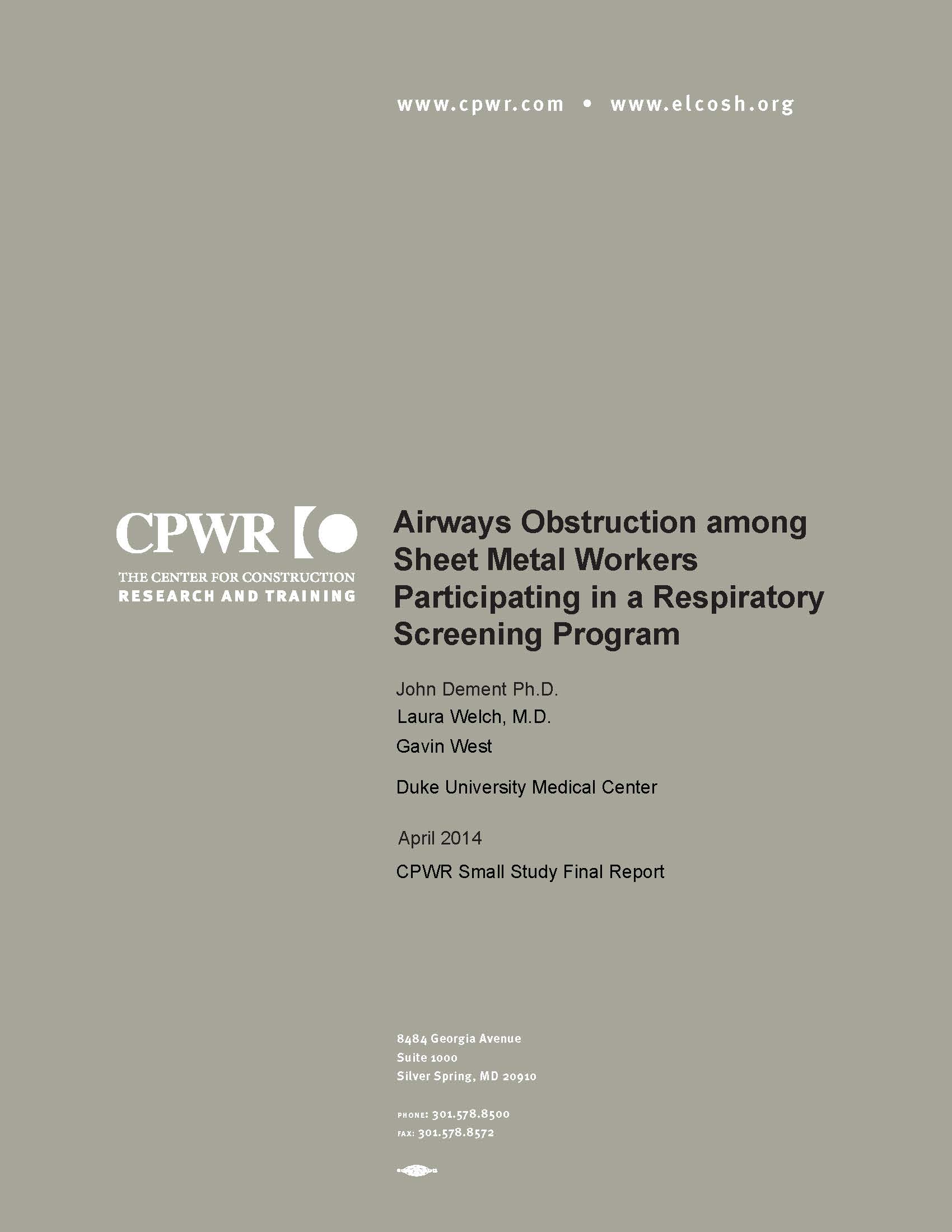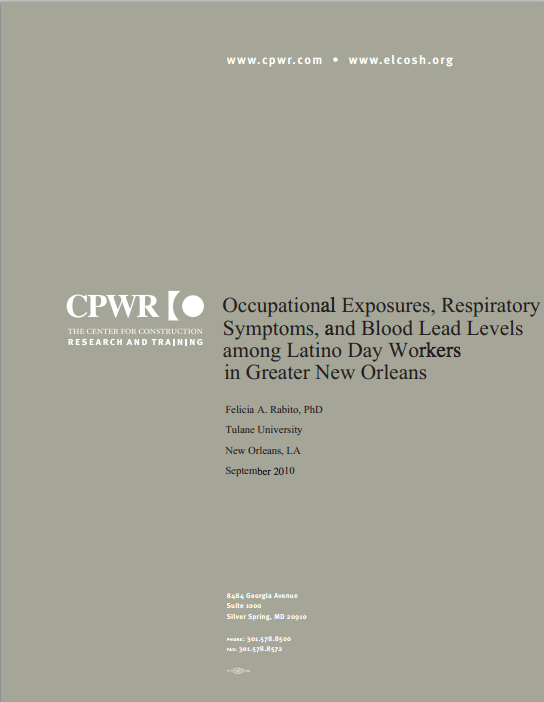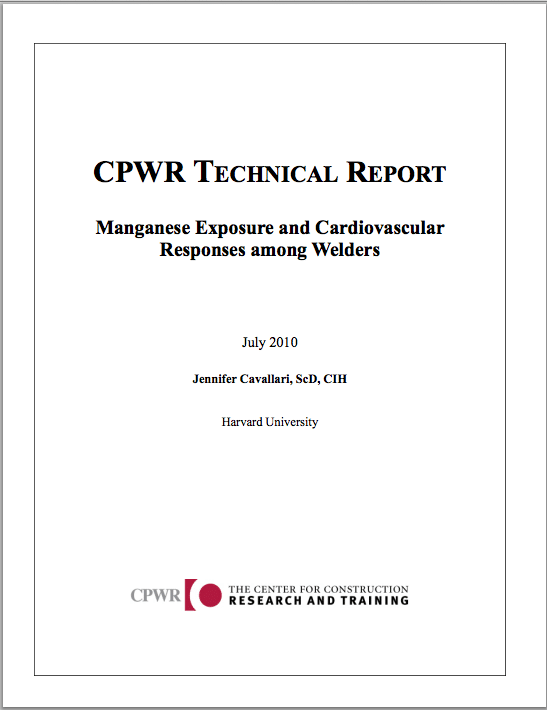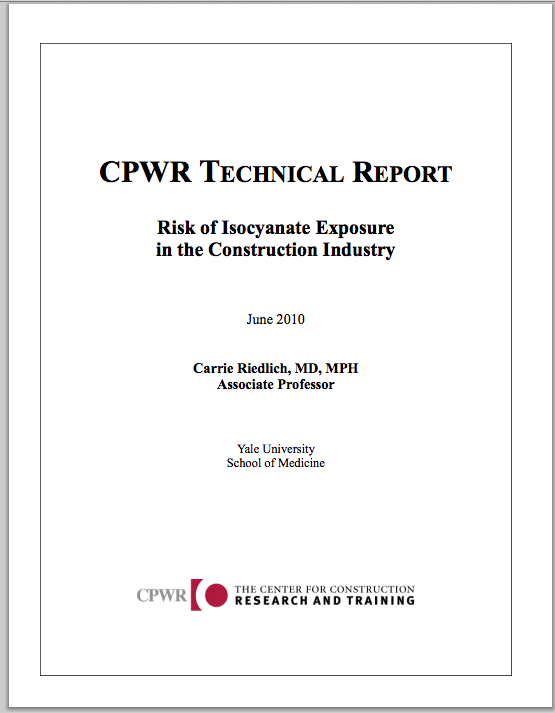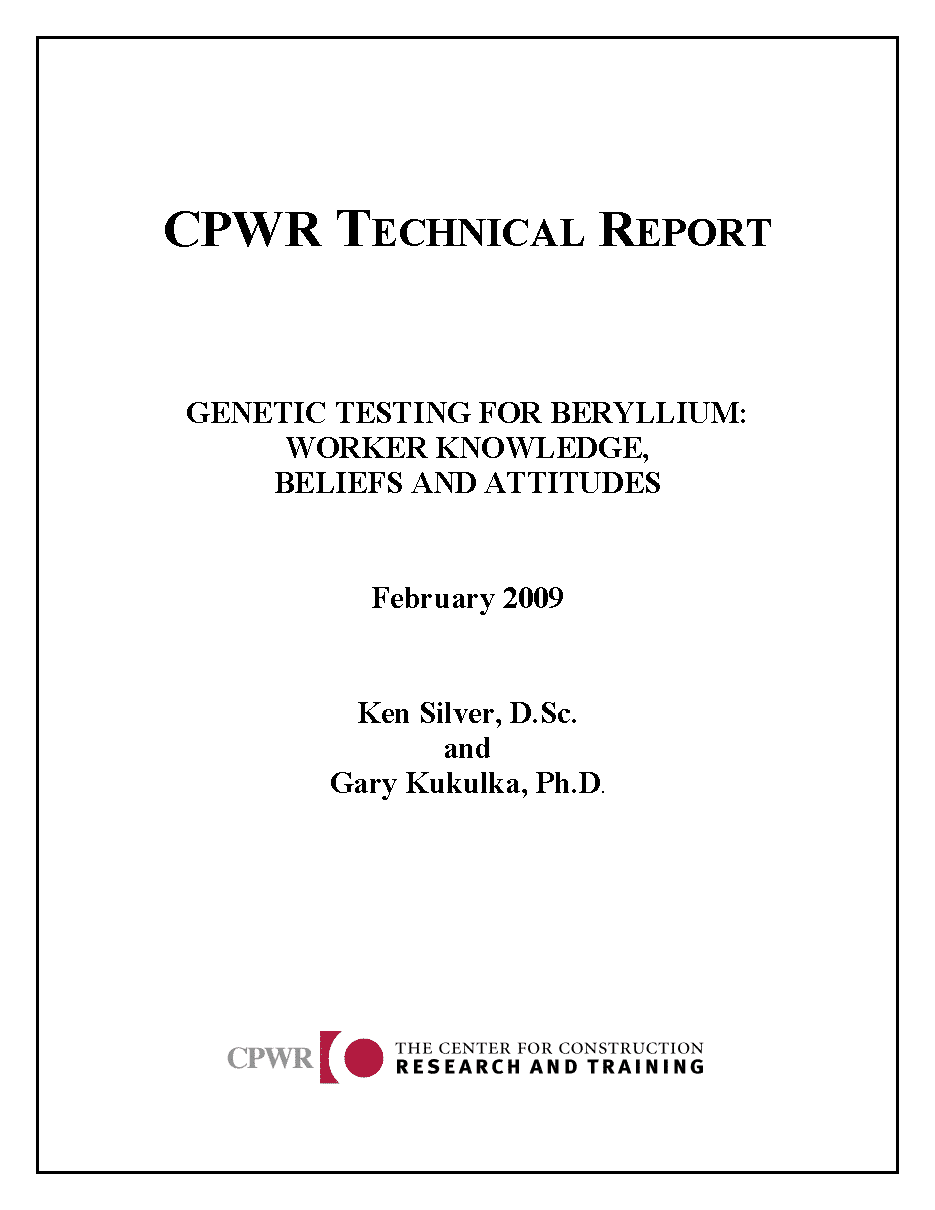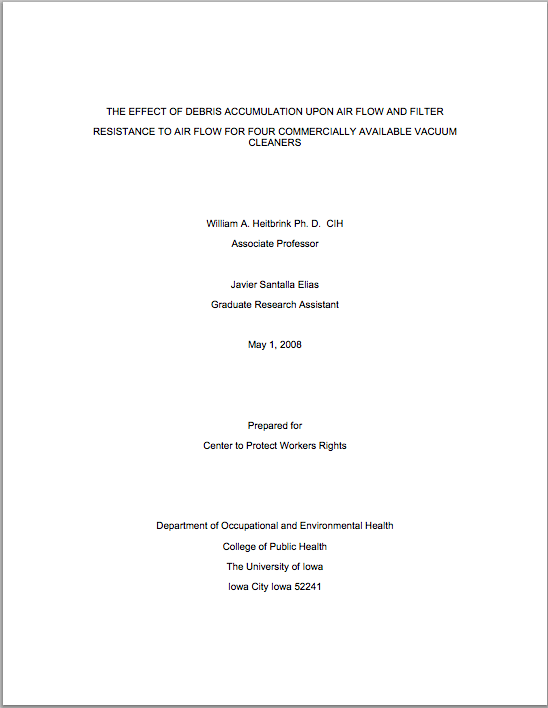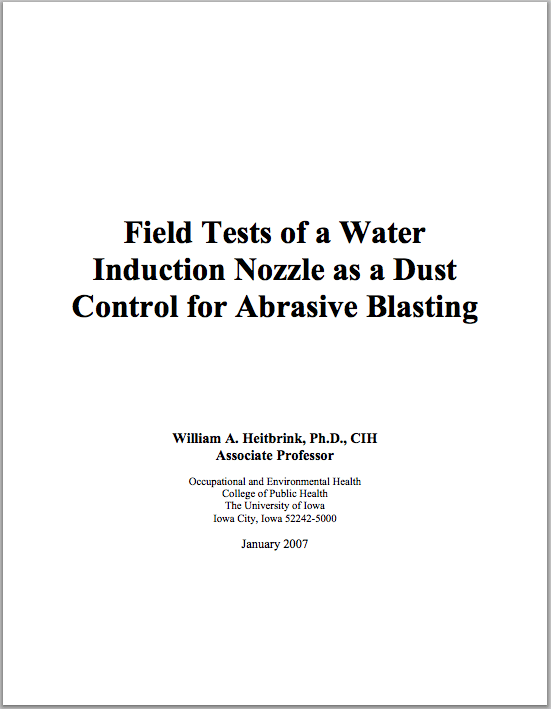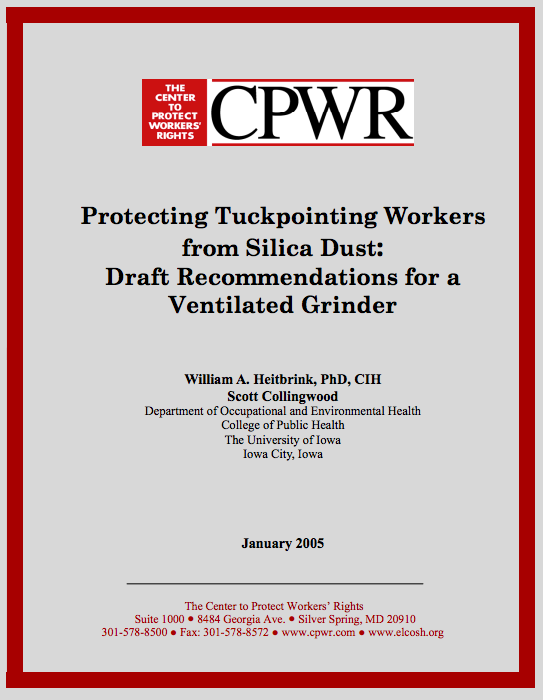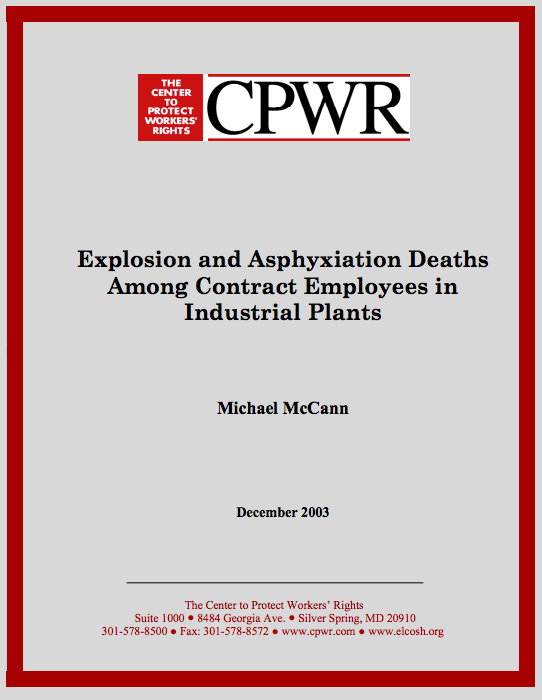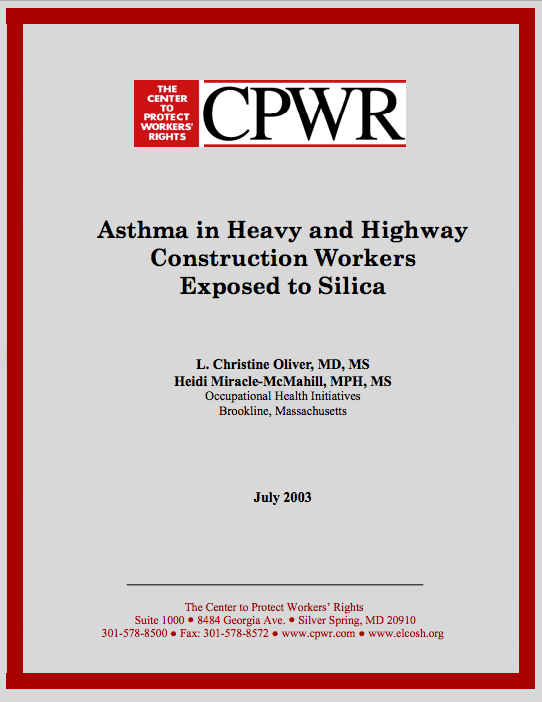Health Hazards
Environmental Heat Stress and Physiological Heat Strain in Construction Workers During Work in the Summer
Fabiano Amorim and Zachary Schlader. May 2024.
This study aimed to assess heat strain and environmental heat stress among U.S. construction workers at both a commercial building construction site and a road construction site.
Responding to the COVID-19 Pandemic in the Construction Industry
Jessica Bunting, Amber Trueblood, Richard Rinehart, and Chris Trahan Cain. September 2023.
This paper describes how CPWR helped control the spread of
COVID-19 in the construction industry by: 1) developing and disseminating educational materials and providing guidance, 2) tracking and analyzing data on COVID-19 and COVID-19 vaccination, and 3) evaluating the effectiveness of distance learning methods. The lessons from these efforts provide a framework for an expedited response to future public health crises
Sheet Metal & HVAC Safety Intervention Adoption & Best Practices Research
Kristen Hurtado, Ph.D. and Kenneth Sullivan. August 2023.
This project assessed interventions to mitigate the exposure of sheet metal and HVAC workers to welding fumes and nanomaterials, including the level of adoption of those interventions. It also developed a comprehensive list of welding safety interventions, classified into five categories: general PPE, ventilation equipment; policies and procedures; materials and equipment; and other.
Nebulizer-Retrofitted Drone Deployment at Residential Construction Sites
Rod Handy. December 2021.
Excessive heat and small airborne particulates, such as those resulting from by plastering, concrete mixing, and masonry work, are serious hazards for construction workers. Recent experiments suggest that water spray may offer considerable benefits in addressing both hazards, and so this study deployed a water-misting drone at two residential construction sites in Utah and measured the drones’ effect on temperatures and particulate matter concentrations.
Ventilation to Reduce COVID-19 Spread in Enclosed Work Areas During Cold Weather: A Survey of Construction Contractors
CPWR. February 2021.
Working in partnership with the NIOSH NORA Construction Sector Council’s COVID-19 Work Group, CPWR collected information on the ventilation challenges facing the construction industry and steps being taken or planned to increase ventilation in enclosed work areas on job sites. This report summarizes those responses.
TRU-Net Noise Survey for Workers (Apprenticeship & Journey-level Trainees) Survey Results
This report details the CPWR worker noise survey that was conducted to learn about trainees’ awareness of noise hazards and hearing loss prevention practices, the types of related training provided, and barriers to use of controls and safer work practices. The worker survey was designed as a follow up to the 2015 trainer survey and continued to utilize the formal research side of the r2p TRU-Net system by having trainers conduct surveys with trainees during their scheduled training courses. The survey results identified a need for additional training materials and new strategies to improve retention of the information and training provided. Based on these findings, CPWR developed the comprehensive Construction Noise and Hearing Loss Prevention Training Program which includes modules and exercises that can be used on their own or part of OSHA training programs.
Nanotechnology: Assessing Awareness and Training Needs Among California Construction Trades
A growing number of construction products incorporate engineered nanoparticles, but little is known about their long-term health effects on exposed workers. The study explored the current understanding and use of nanotechnology applications in heavy industrial/commercial construction among union leaders, apprenticeship program staff and construction contractors. Researchers surveyed 253 contacts representing 24 construction crafts to learn about their knowledge, attitudes and beliefs concerning nano-enabled construction products and about existing health and safety training addressing nanotechnology in construction. Researchers then conducted 21 follow-up interviews with survey respondents and 5 key interviews with California state agency employees.
A Pilot Study of Nanoparticle Levels and Field Evaluation of N95 Filtering Facepiece Respirators on Construction Sites
Submicron ultrafine particles and nanoparticles found in construction dust can be inhaled deeply into the lungs and retained in the lower airways. However, we lack field test data establishing nanoparticle exposure levels on construction sites, and the filtration efficiency of N95 respirators commonly worn by construction workers on the job. Researchers positioned a manikin wearing an N95 respirator on multiple construction sites and used a commercially available nanoparticle counter to measure exposures and respirator efficiency by collecting samples from inside and outside the mask. The team tested two respirators (one pleated and one foldable) on construction sites near concrete drilling and grinding activities, earthmoving operations, and wood cutting during frame carpentry.
Airways Obstruction among Sheet Metal Workers Participating in a Respiratory Screening Program
More than 12 million Americans suffer from a form of COPD (Chronic Obstructive Pulmonary Disease) such as bronchitis and emphysema. Most cases are associated with smoking, but occupational exposures are another important risk factor. Researchers examined detailed medical and work histories, as well as X-rays, for 3944 current and former Sheet Metal Workers whose work tasks were associated with exposure to respirable silica, asbestos, wood and cement dusts, fiberglass, paints and other established respiratory hazards. The data, collected as part of a medical screening program, enabled investigators to link specific occupational tasks to increased COPD risk.
Welding Fume Local Exhaust Ventilation (LEV) Evaluation: the Lincoln Electric XTractor Portable LEV System
Occupational Exposures, Respiratory Symptoms, and Blood Lead Levels among Latino Day Workers in Greater New Orleans
Manganese Exposure and Cardiovascular Responses Among Welders
Risk of Isocyanate Exposure in the Construction Industry
Genetic Testing for Beryllium: Worker Knowledge, Beliefs and Attitudes
The Effect of Debris Accumulation Upon Air Flow and Filter Resistance to Air Flow for Four Commercially Available Vacuum Cleaners
Researchers tested four industrial vacuum cleaners, each with a hose and hood that attaches to a right-angle mortar grinder, that can be used when removing mortar (tuck-pointing). The researchers evaluated the equipments’ airflow ability and the efficiency of the vacuum cleaner filters.
Field Tests of a Water Induction Nozzle as a Dust Control for Abrasive Blasting
Presents preliminary findings of one type of wet blasting technology to examine the tool’s effectiveness in reducing inhalable dust when used on precast concrete
Protecting Tuckpointing Workers from Silica Dust: Draft Recommendations for a Ventilated Grinder
Presents preliminary findings showing how to use an industrial vacuum cleaner, hose, and shroud attached to a grinder to reduce dangerous dust exposures for workers who remove old mortar from masonry.
Explosion and Asphyxiation Deaths among Contract Employees in Industrial Plants
This summary, prepared for the U.S. Chemical Safety and Hazard Investigation Board, finds that 91 contract employees on construction projects at industrial plans in 1992-2001 were killed by explosions or asphyxiation and recommends changes, including new training and procedures, particularly for welding.
Asthma in Heavy and Highway Construction Workers Exposed to Silica.
Analyzes questionnaires completed by more than 300 construction workers believed to be exposed to silica on Boston’s Big Dig in 2001 and finds more than 25% of the workers reported symptoms consistent with asthma, with higher levels for some trades and types of work – and with the asthma apparently largely undiagnosed and untreated.
Model Specifications for the Protection of Workers from Lead on Steel Structures
Ready Mixed Concrete Truck Drivers: Work-Related Hazards and Recommendations for Controls
After analyzing data from OSHA and 23 ready mixed concrete plants in the United States, the authors identify slips, trips, and falls, impact/mechanical hazards during equipment operations, silica exposures during mixer cleanout, and other risks, then recommend a comprehensive safety and health program and other steps to prevent injuries and illnesses.
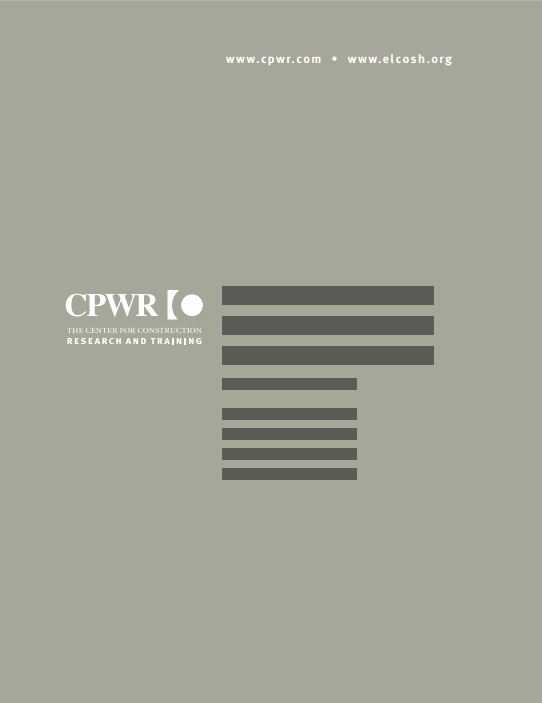
The Use of a Task-Based Exposure Assessment Model (T-BEAM) for Assessment of Metal Fume Exposures During Welding and Thermal Cutting
Evaluates a task-based approach to measuring worker exposures to particulates and some heavy metals during welding and thermal cutting; finds a significant health hazard to some trades, depending on several factors; and evaluates the use of mechanical ventilation to reduce the exposures.

Airborne Exposures and Ambulatory Peak Expiratory Flow in Drywall Finishers
Tests a new portable device for measuring lung exhalation among construction workers on the job and finds the approach practicable, although area sampling proves undependable in a construction setting; preliminary data suggest dust controls are needed during sanding and the relationship between air flow and drywallers’ dust exposures should be examined further.

Unsound Conditions: Work-Related Hearing Loss in Construction, 1960-75
The first comparative multivariate analysis of hearing test data from national surveys in 1960-75 – the most current data on adults – finds both that blue-collar workers generally have more noise-induced hearing loss than white-collar workers and the rate of such hearing loss is markedly higher among construction workers compared with other blue-collar workers.
An Assessment of Metal Maintenance Workers’ Solvent Exposures
Compares fire and toxic hazard exposures to metal maintenance workers in elevators using solvent – and water – based products; finds markedly reduced fire and health risks using water-based strippers and lacquers.
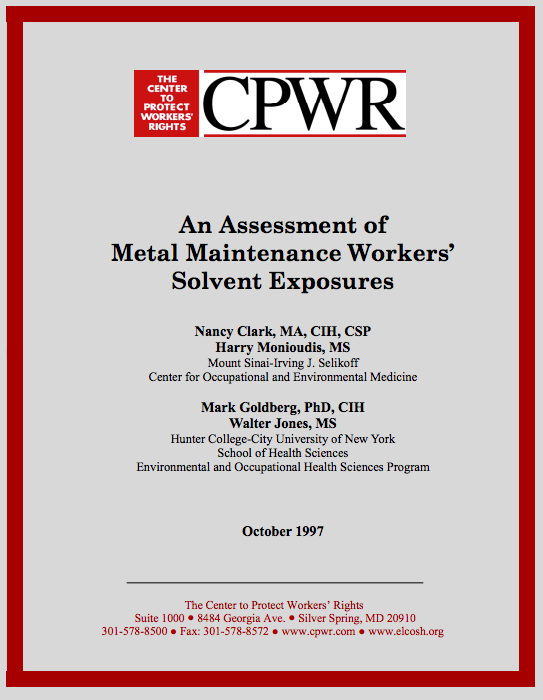
Lyme Disease, Prevalence among Construction Workers on Long Island, New York, 1996
Presents results of a pilot study of 396 construction workers, which found 13% tested positive for Lyme disease, compared with 6% of general population, suggesting outdoors workers are at increased risk and need prevention training.

Occupational Blood Lead Surveillance of Construction Workers, II: Health Programs in Thirteen States
Continuation of 1995 report recommends increased funding for occupational lead surveillance, programs targeted to construction, uniform data collection, and interagency cooperation; focuses on Alabama, Alaska, Florida, Idaho, Indiana, Kentucky, Mississippi, North Carolina, Oregon, Pennsylvania, South Carolina, Tennessee, and West Virginia.

Abnormalities Consistent with Asbestos-Related Disease among Long-Term Demolition Workers
Presents findings of Mount Sinai of Medicine study suggesting that demolition workers as a group have had significant exposure to asbestos.

Health Hazards to Construction Workers During the Demolition of Two Tenement Buildings
Analyzes worksite exposures to lead, dusts, and safety hazards among demolition workers.
